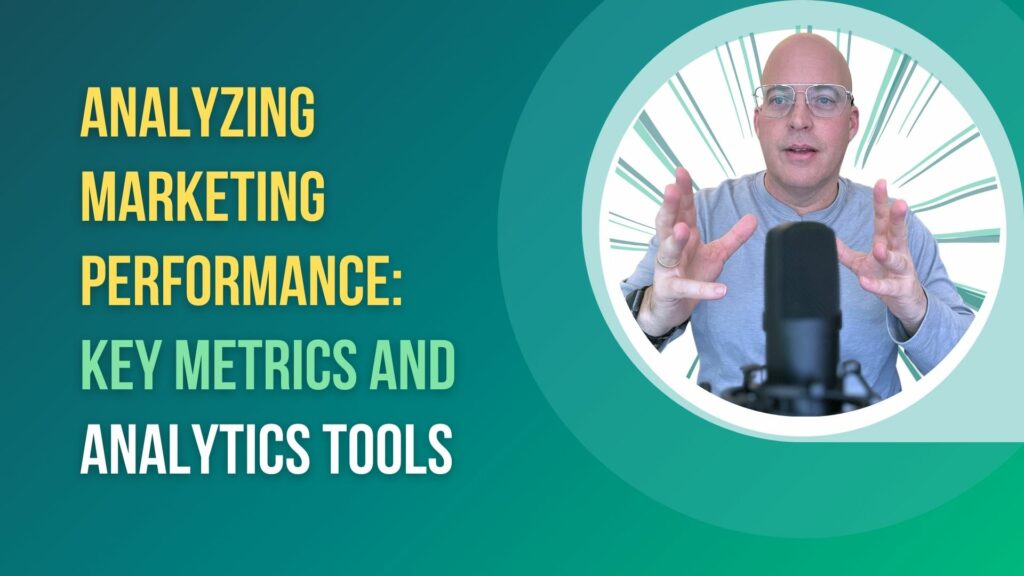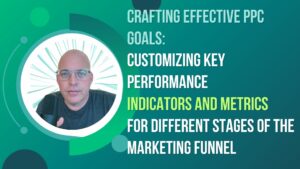In today’s digital world, businesses must have a solid online presence. An effective digital marketing strategy or analytics marketing can make or break a business, and it is essential to keep track of the performance of that strategy. Companies can make decisions based on performance.
Tracking digital marketing performance involves monitoring various metrics across different platforms. In 2023, staying on top of these metrics will be more critical than ever as the world continues to shift toward a more digitally-focused environment.
Importance of Analyzing Digital Marketing Performance
Analyzing digital marketing performance is critical for several reasons. First and foremost, it allows businesses to see how their marketing efforts are performing and whether they are meeting their goals. Without regular analysis, a company might be wasting resources on ineffective marketing strategies that do not generate results.
Furthermore, tracking digital marketing metrics allows companies to identify which channels and tactics are most successful in reaching their target audience. This information can then optimize future campaigns by focusing on what works best. Analyzing digital marketing performance or analytics marketing can help inform overall business decisions beyond just marketing.
They understand how customers interact with the brand. Companies can gain insights into their behavior and preferences that may inform product development or customer service strategies.
Key Metrics to Track in 2023
Businesses should be tracking many different metrics when analyzing their digital marketing performance. However, some key metrics stand out as particularly important in 2023.
One vital area is website metrics such as traffic sources and channels, bounce rate and time on site, conversion rates, and goal completions. Social media metrics should also be tracked closely, including engagement rates (likes, comments, shares), follower growth and demographics, and website referral traffic.
In addition, email marketing metrics such as open rates and click-through rates, conversion rates and the revenue generated, list growth, and segmentation should be monitored. Paid advertising metrics like cost per click (CPC) and cost per acquisition (CPA), click-through rate (CTR) and conversion rate (CVR), and return on ad spend (ROAS) should also be analyzed.
SEO metrics should not be ignored, including keyword rankings and organic traffic, backlink profile analysis, and on-page optimization analysis. By staying on top of these metrics for digital marketing performance, businesses can make more informed decisions about their online strategy.
Website Metrics
Traffic Sources and Channels
Knowing where your website traffic comes from is crucial for understanding digital marketing performance. It helps you identify which channels drive the most traffic and which need improvement.
You can see exactly where your traffic comes from, including organic search, social media, paid search, email campaigns, and more. This is with the help of Google Analytics. You can also track the number of sessions and users each channel brings to your site.
You can optimize marketing efforts by focusing on the channels bringing in the most traffic. For example, if social media is driving a lot of traffic to your site, but paid search is not doing as well, you may want to focus more on social media campaigns and adjust or reduce your paid advertising budget.
Bounce Rate and Time on Site
Bounce rate refers to visitors who leave your website after viewing only one page. A high bounce rate may indicate that visitors aren’t finding what they’re looking for or are having trouble navigating your site. Time on site measures how long visitors stay on your website before leaving.
By tracking these metrics with Google Analytics or other analytics tools, you can identify any issues with user experience or content that may be causing a high bounce rate or low time on site. For instance, if users leave quickly after landing on a particular page of your website (such as a blog post), it could indicate that the content isn’t engaging enough or doesn’t match their expectations based on the title and meta description.
Conversion Rates and Goal Completions
Any digital marketing campaign’s ultimate goal is to drive conversions — whether that means making a purchase, filling out a form, signing up for an email list, or completing another desired action. Conversion rates measure how many visitors end a specific action, such as filling out a form or making a purchase, divided by the total number of visitors to your site. Setting up goals is an effective way to track conversions and the success of your digital marketing efforts.
For example, you could set a goal for visitors who spend more than five minutes on your website or add items to their cart. Track these metrics to determine which campaigns or website changes drive the most conversions and adjust your strategy accordingly.
Social Media Metrics
It’s no secret that social media plays a role in digital marketing campaigns. With millions of users active on various platforms, it gives businesses a unique opportunity to engage with potential customers and build brand awareness. However, to measure the effectiveness of your social media efforts, you need to track key metrics. Here are three important social media metrics to monitor.

Engagement Rates
Engagement rates on social media refer to likes, comments, and shares. It’s an important metric because it shows how well your content resonates with your audience. A high engagement rate indicates that people are interested in what you offer and willing to engage with your content. To calculate engagement rates, divide the total number of likes, comments, and shares by the total number of followers or impressions: Engagement rate = (Total likes + comments + shares) / Total followers or impressions. You should aim for an engagement rate between 1-5%. Anything above this range is considered excellent.
Follower Growth and Demographics
Follower growth is another essential metric measuring the number of new followers you gain over time. It indicates that people are interested in your brand and want to stay updated about your products or services. In addition to tracking follower growth, it’s also essential to analyze the demographics of your followers. This includes their age range, gender, location, interests, and online behavior patterns. Create content that resonates and tailor your marketing efforts accordingly.
Referral Traffic to Website
The goal is to drive traffic to your website and encourage conversions. Referral traffic refers to people who visit a website from social media platforms.
By tracking this metric, you can determine how effectively your social media posts drive traffic to your site. You can track referral traffic using Google Analytics or any other web analytics tool.
You should analyze which social media platforms are effective and tailor your content strategy accordingly. By monitoring these three key metrics, you can evaluate the effectiveness of marketing efforts and make data-driven decisions to improve performance.

Email Marketing Metrics
Open Rates and Click-Through Rates: The Importance of Measuring Engagement
Email marketing is one of the most effective digital marketing channels for driving conversions, making it critical to monitor email performance metrics. Open and click-through rates (CTRs) are two primary metrics for analyzing email marketing performance.
Open rates measure the number of emails subscribers opened, expressed as a percentage. A high open rate suggests that subscribers are interested in the content of your emails.
However, a low open rate could indicate poor subject lines or uninterested subscribers. CTRs measure the number of clicks on links within an email compared to how many times it was sent, expressed as a percentage.
A high CTR indicates strong engagement with your content and can increase website traffic and conversions. In contrast, a low CTR may suggest ineffective calls-to-action (CTAs) or poorly designed emails.
Conversion Rates and Revenue Generated: Turning Subscribers Into Customers
Conversion rate measures how many subscribers completed an action after clicking on a call-to-action within an email campaign; such activities may include making purchases, downloading content, or registering for events. This can vary depending on the industry and type of business but tracking them is essential to help you understand how well specific campaigns are working.
Calculating revenue generated from each email campaign is crucial for understanding its direct contribution to your bottom-line results and determining ROI against other digital marketing efforts like social media ads or SEO tactics like link-building strategies. List segmentation allows you to analyze data from different groups within your subscriber list which helps target specific offers even more accurately by segmenting based on demographics such as age range or geographical location – as well as behavioral factors like purchase history–all so you can tailor messaging accordingly and increase conversion opportunities.
Paid Advertising Metrics
While organic growth is significant, paid advertising can be a tool to reach audiences and drive conversions. However, tracking the right metrics is crucial to ensure your advertising budget is used effectively. Here are some key paid advertising metrics to track:
Cost Per Click (CPC) and Cost Per Acquisition (CPA)
CPC refers to the amount of money you pay for each click on your ad. CPA, on the other hand, measures how much it costs you to acquire a new customer through your ad campaign. Both of these metrics are important in determining the effectiveness of your advertising strategy.
If your CPC is high, it could mean your ads are not appropriately targeted or not resonating with your audience. Similarly, if your CPA is too high, it may indicate that you need to refine your targeting or improve the landing page for your ads.
Click-Through Rate (CTR) and Conversion Rate (CVR)
CTR measures those who clicked on your ads out of all who saw them. This metric can help you understand how well-optimized your ad copy and visuals are. Your CVR measures how many people completed an action after clicking on an ad, such as filling out a form or purchasing. This metric is particularly important because it directly ties back to revenue generation.
Return on Ad Spend (ROAS)
ROAS measures how much revenue you generate for every dollar spent on ads. A ROAS of 1:1 means you earned one dollar in revenue for every dollar spent on ads.
A high ROAS indicates that you’re getting a good return on investment from your advertising budget. If your ROAS is low, it may suggest that you need to adjust your targeting or ad messaging to improve performance.
By tracking these key metrics, you can ensure that your paid advertising efforts are practical and efficient. It’s important to continually optimize your advertising strategy based on these metrics to maximize ROI and drive business growth.
SEO Metrics
Search Engine Optimization (SEO) is optimizing a website and improving its ranking on search engines. It involves techniques such as keyword research, on-page optimization, backlink building, and more. By tracking your SEO metrics, you can measure the effectiveness of your SEO strategy and make necessary improvements.
Keyword Rankings and Organic Traffic
The first SEO metric to track is your website’s keyword rankings. This refers to where your website ranks on search engine result pages (SERPs) for specific keywords related to your business.
You should monitor these rankings regularly. In addition to keyword rankings, track organic traffic.
It refers to visitors landing on a website through organic search results rather than paid advertising or other sources. Analyzing organic traffic can help you identify which pages rank well and which need improvement.
To monitor these metrics, use a tool like Google Analytics or SEMrush. These tools allow you to see how many people visit your site through organic searches and what keywords they use to find it.
Backlink Profile Analysis
A backlink is a link coming from one website to another. Backlinks are essential for SEO because they signal that other websites consider your content valuable enough to link back to it. The more high-quality backlinks, the higher it will rank in search results.
You’ll need a tool like Ahrefs or Moz’s Link Explorer to analyze your backlink profile. These tools allow you to see who’s linking to your site and which pages they’re linking from.
You should focus on building high-quality backlinks. Avoid spammy backlinks or any that violate search engine guidelines, as they can harm your SEO efforts.
On-Page Optimization Analysis
On-page optimization refers to optimizing the content. It is also about the structure of individual pages on your website to improve their SEO. It involves title tags, meta descriptions, header tags, internal linking, and more.
To analyze your on-page optimization, use a tool like Screaming Frog or SEMrush’s Site Audit. These tools will crawl your website and identify any issues with on-page SEO.
Ensure every page has a unique title tag and meta description. Use header tags (H1, H2, etc.) to structure the content. It makes it easier for search engines to understand.
Internal linking can also help improve SEO by connecting related pages. Tracking these SEO metrics regularly and making necessary adjustments can enhance your website’s visibility on search engines. It drives organic traffic to your site.

Analytics Tools for Tracking Performance
When tracking digital marketing performance, businesses have a wealth of analytics tools. Here are some of the most popular tools used by marketers in 2023:
Google Analytics
As the industry standard in web analytics, Google Analytics provides valuable insights into website traffic and user behavior. Some of the key features include audience demographics, real-time data, and conversion tracking.
For a more comprehensive analysis, Google Analytics can be integrated with products like AdWords and Search Console. A powerful aspect of Google Analytics is the ability to track user behavior.
Businesses can see which pages are most popular, how users navigate around their website, and which actions lead to conversions. This data can then be used to optimize website design and content.
SEMrush
In addition to web analytics, SEMrush provides insights into search engine optimization (SEO), paid advertising campaigns, and social media performance. Key features include keyword research, backlink analysis, and position tracking.
One of the strengths of SEMrush is its competitive analysis capabilities – businesses can compare their performance against competitors regarding keyword rankings, backlinks, and other SEO factors. You can then use this information to adjust strategies accordingly.
Ahrefs
Ahrefs is another all-in-one SEO tool that provides insights into website traffic sources, backlinks from high-authority websites, and competitor analysis. Its Site Explorer feature offers detailed reports on organic search traffic and competitor’s content strategy through Domain Comparison.
Ahrefs’ keyword explorer offers advanced features such as click metrics estimation by analyzing clickstream data. It helps understand how many clicks you could expect if your site ranks first for a particular query. The use of analytics tools is crucial to track digital marketing performance.
Google Analytics, SEMrush, and Ahrefs are just a few examples of the many practical tools available in 2023. Businesses can make decisions when optimizing their digital marketing strategies for tremendous success.
Analyzing Key Metrics
By tracking key metrics in 2023 using analytics tools, businesses can effectively measure the success of their digital marketing efforts. By understanding your audience’s behavior through data analysis, you can tailor your marketing campaigns to engage them better. The insights gleaned from tracking these key metrics also help you make informed decisions about budget allocation. Tracking digital marketing performance through a data-driven approach with key metrics can be highly successful for any business. Stay ahead of the competition by following these metrics for your business’s 2023 strategy.








